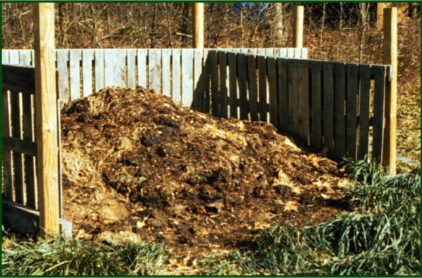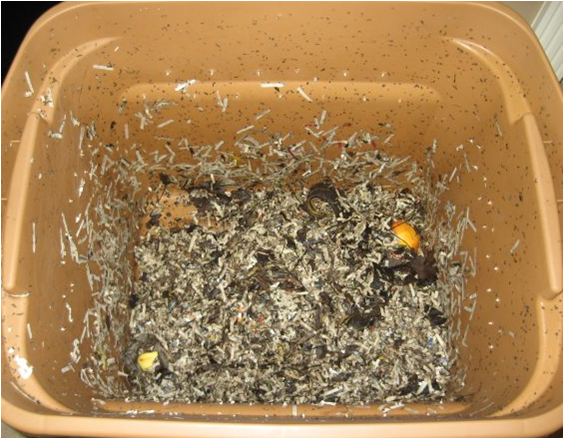What is Compost?

Compost is decomposed organic materials. It is a natural soil amendment that helps hold soil together and helps soil hold more water. The process of composting makes materials decompose faster and in composting, food scraps are referred to as greens and bulking materials (such as newspaper, dry leaves or shredded paper) are called browns.
Compost contains nutrients plants need and reduces the amount of chemical fertilizers needed, thereby saving you money! With approximately 25% of our landfill bound waste being food waste, compost also reduces the amount of waste that enters our landfills.
Build Your Own Composting System
Outdoor Compost Pile
Construct a compost bin out of wire-mesh, wooden pallets or a garbage can. Manufactured compost bins are also available for purchase. Ideal size is approximately a 3 foot cube to promote sufficient aeration. A shaded area will help prevent drying out in summer, and avoid areas that will interfere with lawn and garden activities. As you build your compost pile, alternate materials that are “green” with materials that are “brown.” For example, after layering grass clippings and green leaves, alternate with newspaper and dried leaves. Add your compostable items, water the pile regularly and turn every few weeks to increase aeration. When pile no longer heats after mixing, allow it to cure (stand without mixing) for at least 4 weeks before using the compost.


Vermicomposting
Worm composting is a method for recycling food waste into a rich, dark, compost. Worm composting allows for year round composting and works well for apartment dwellers and classrooms.

What Can be Composted?
Outdoor Compost
- Fruit and Vegetable Scraps
- Human Hair, Fur, & Feathers
- Clothes Dryer Lint
- Cardboard Rolls
- Newspaper or Shredded Paper
(Avoid Colored and Shiny/Glossy Kind) - Straw or Hay
- Eggshells, Coffee Grounds, & Teabags
- Nutshells
- Grass Clippings & Yard Waste
- Leaves – Fresh or Dry – From Trees & Shrubs
- Sawdust or Wood shavings (in Small Quantities)
Vermicomposting
- Fruit scraps and peels (excluding acidic fruits, i.e. citrus)
- Vegetable trimmings (excluding acidic vegetables, i.e. onions and tomatoes)
- Leaves
- Corn cobs and husks
- Coffee grounds and filters, and teabags
- Egg shells
- Lettuce
- Grass clippings, in small quantities